Rubber magnets are composed of magnetic powder (such as SrO6 and Fe2O3), chlorinated polyethylene (CPE), and other additives like EBSO and DOP. These are processed through extrusion and calendering techniques. They can be bent, twisted, or rolled without requiring any additional mechanical processing. They can be cut to the desired size and shape, or coated with PVC, adhesive, UV oil, and other finishes as per customer specifications.
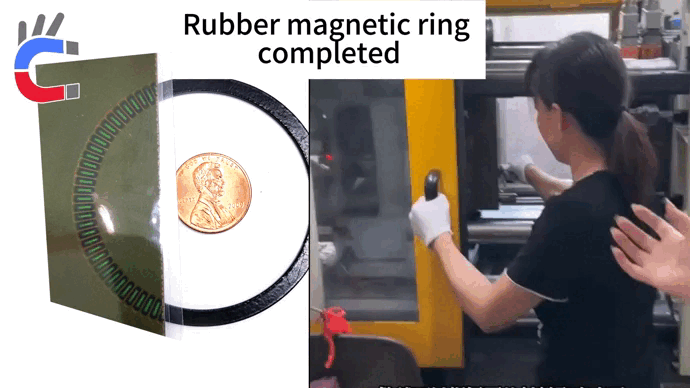
An ordinary rubber magnet can be transformed into products like refrigerator magnets, but crafting it into a rubber magnetic encoder ring is a more complex task. The process involves several steps:
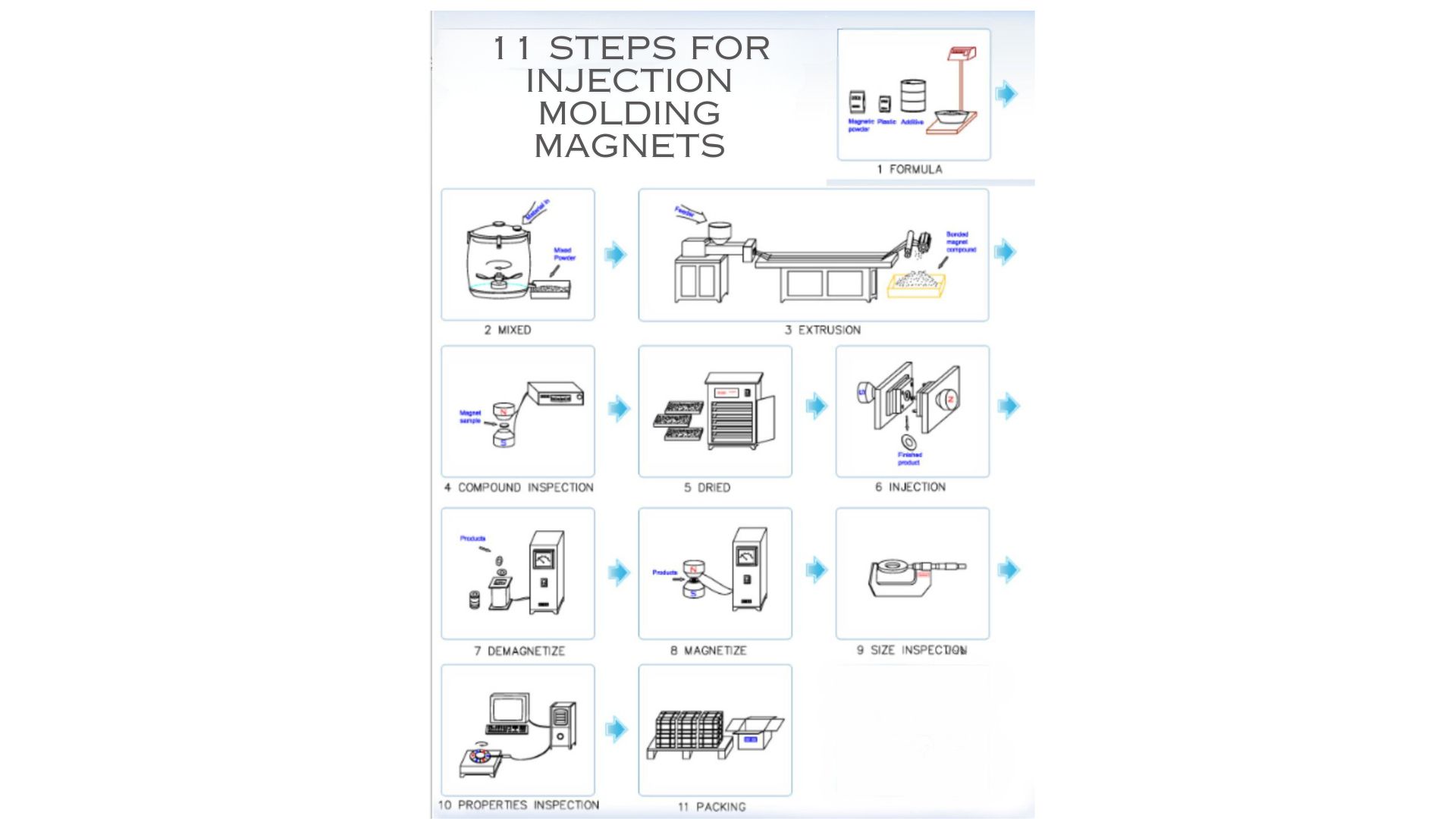
The process of creating rubber magnets involves blending magnetic powder with other powders and chemicals, then vulcanizing and drying the coarse powder to form granular materials. These granules are then heated and shaped using an injection molding machine to produce the basic finished product. Finally, the product is magnetized to meet the customer’s specifications, completing the production of the encoder magnetic ring.
Key points to highlight include:
- Prior to vulcanization, the magnetic powder must be magnetized to imbue the product with permanent magnetism. The benefit of magnetizing before vulcanization is that the direction of the external magnetic field remains consistent, resulting in superior magnetic properties.
- Injection molds are typically customized to match the design of various encoders, although a company with an extensive mold inventory may not require additional customization.
- Similarly, magnetization molds also need to be customized to fit the customer’s needs, although a well-equipped company may have the necessary molds on hand without the need for extra customization.
The cost of this customization is higher, but it yields significant benefits. It enhances magnetic performance and stability, offering higher signal resolution and a stable output. This makes it ideal for applications that demand precision and high resolution, such as in precision instruments, magnetic encoders, robotic arms, motor Hall effect sensors, automation equipment, micro water pumps, micro motors, electronic instruments, and automotive electronics. Additionally, customized molds can lead to a more durable product with a longer service life.
This process also imparts distinct characteristics to the rubber magnets: they are highly flexible, lightweight, and thin, while also being wear-resistant, shock-resistant, and capable of withstanding high pressure (attributes that ferrite and NdFeB magnets lack, making them essential for sports robots). Additionally, they exhibit excellent corrosion resistance (a feature that NdFeB magnets do not possess).
One important limitation to note is that rubber magnets are not resistant to high temperatures. Their operational temperature range is from -40°C to 100°C.
Rubber magnetic rings are easily identifiable due to their black and shiny appearance, and their magnetic intensity is typically around 100-600 gauss.
Below is a table outlining the performance and physical properties of rubber magnets:

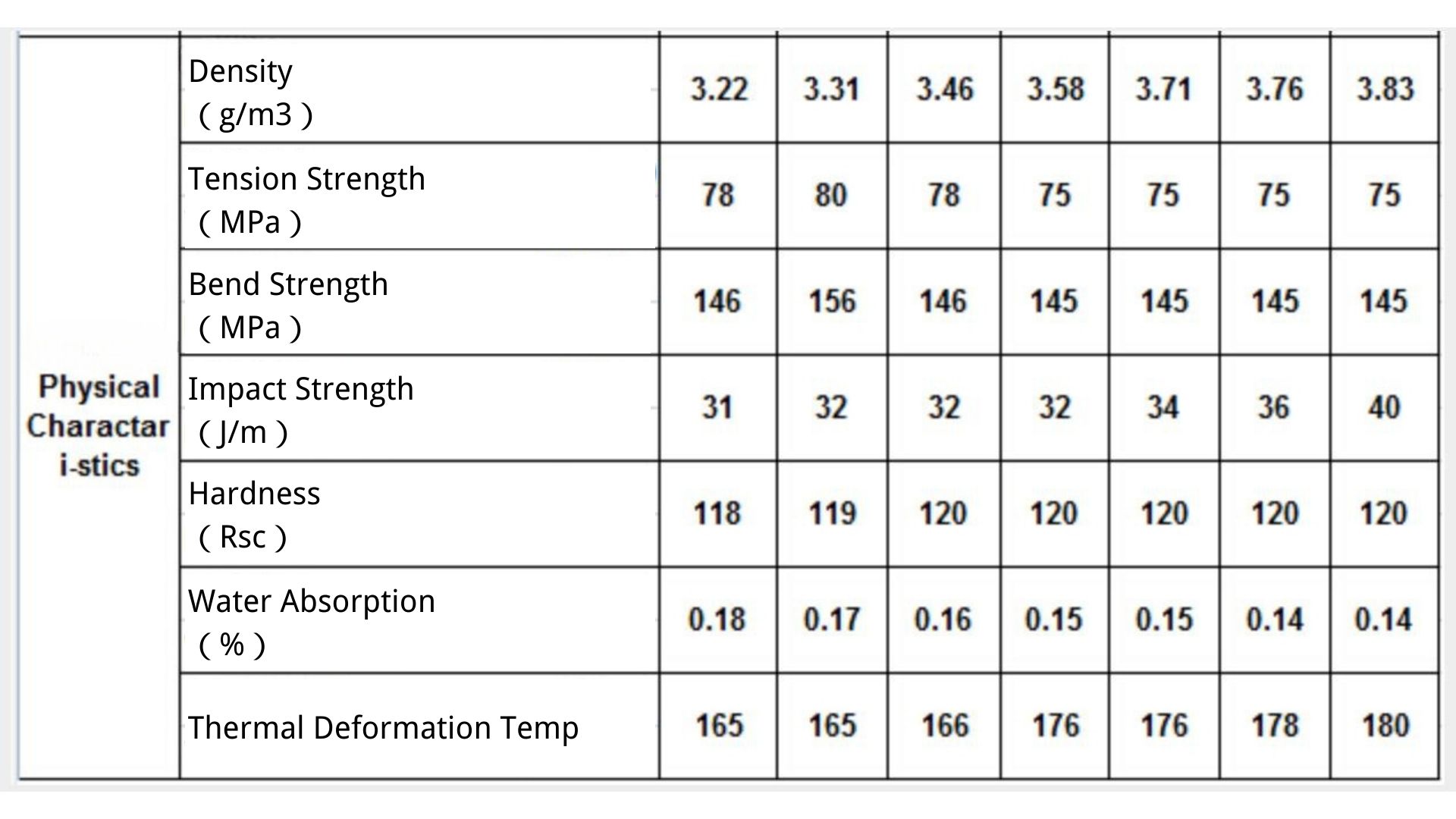
In practical applications of encoder magnetic rings, the most common pole configurations are 2 poles, 4 poles, 6 poles, 8 poles, 16 poles, 32 poles, 60 poles, and 128 poles.
- 2 magnetic poles: This is the simplest encoder design, capable of detecting forward and reverse directions.
- 4 magnetic poles: More common, this configuration can achieve 90-degree resolution.
- 6 magnetic poles: This configuration offers improved resolution and can detect angles with 60-degree accuracy.
- 8 magnetic poles: Providing further resolution improvement, this can detect angles at 45 degrees.
- 16 magnetic poles: This allows for high-precision detection, with an angular resolution of 22.5 degrees.
- 32 poles: Offering very high accuracy with an angular resolution of 11.25 degrees, this is suitable for demanding applications.
- 60 magnetic poles: This ultra-high resolution is used in applications requiring very precise angle control.
- 128 magnetic poles: Suitable for high-precision automation equipment and complex motion scenes in intelligent robots.
As the number of magnetic poles increases, the encoder’s resolution and detection accuracy improve, but so does the complexity and cost. Rubber magnets can achieve magnetization for 128+ poles, and our company can achieve magnetization for 400+ poles.
Rubber magnetic rings can also be categorized based on the magnetization direction:
- Single-track radial multipole magnetic ring
- Single-track axial multipole magnetic ring
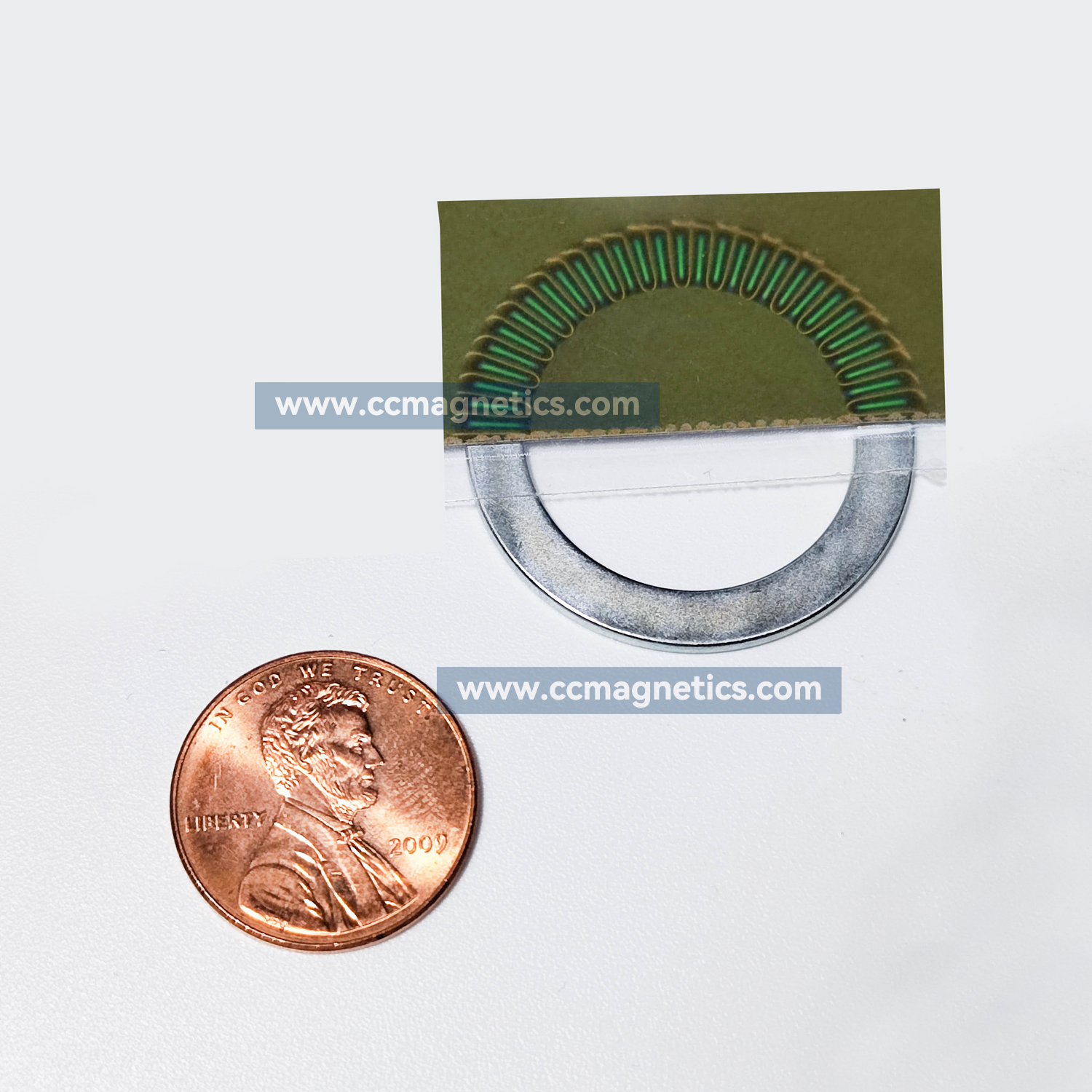
- Multi-orbit radial multi-pole magnetic ring
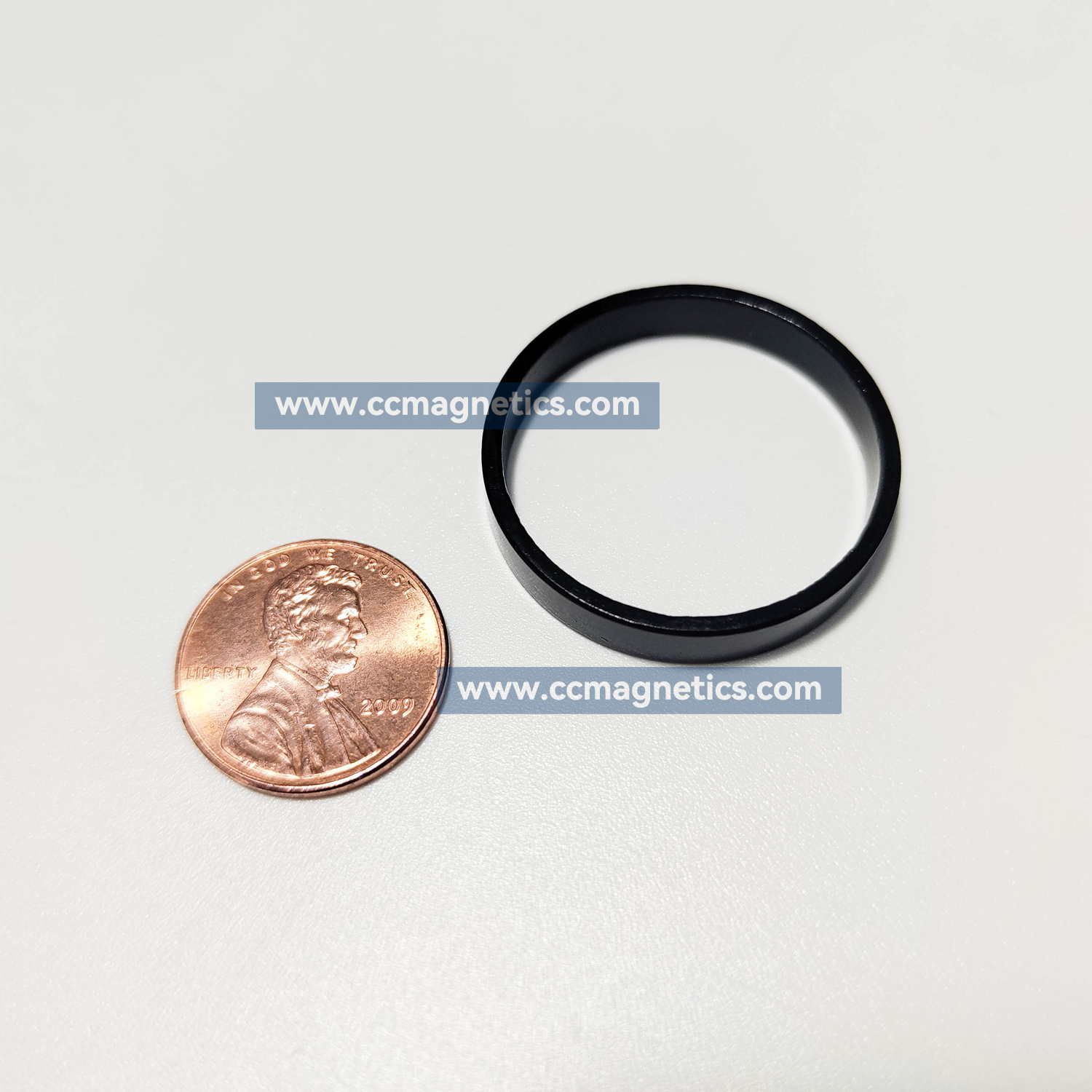
- Multi-track axial multi-pole magnetic ring
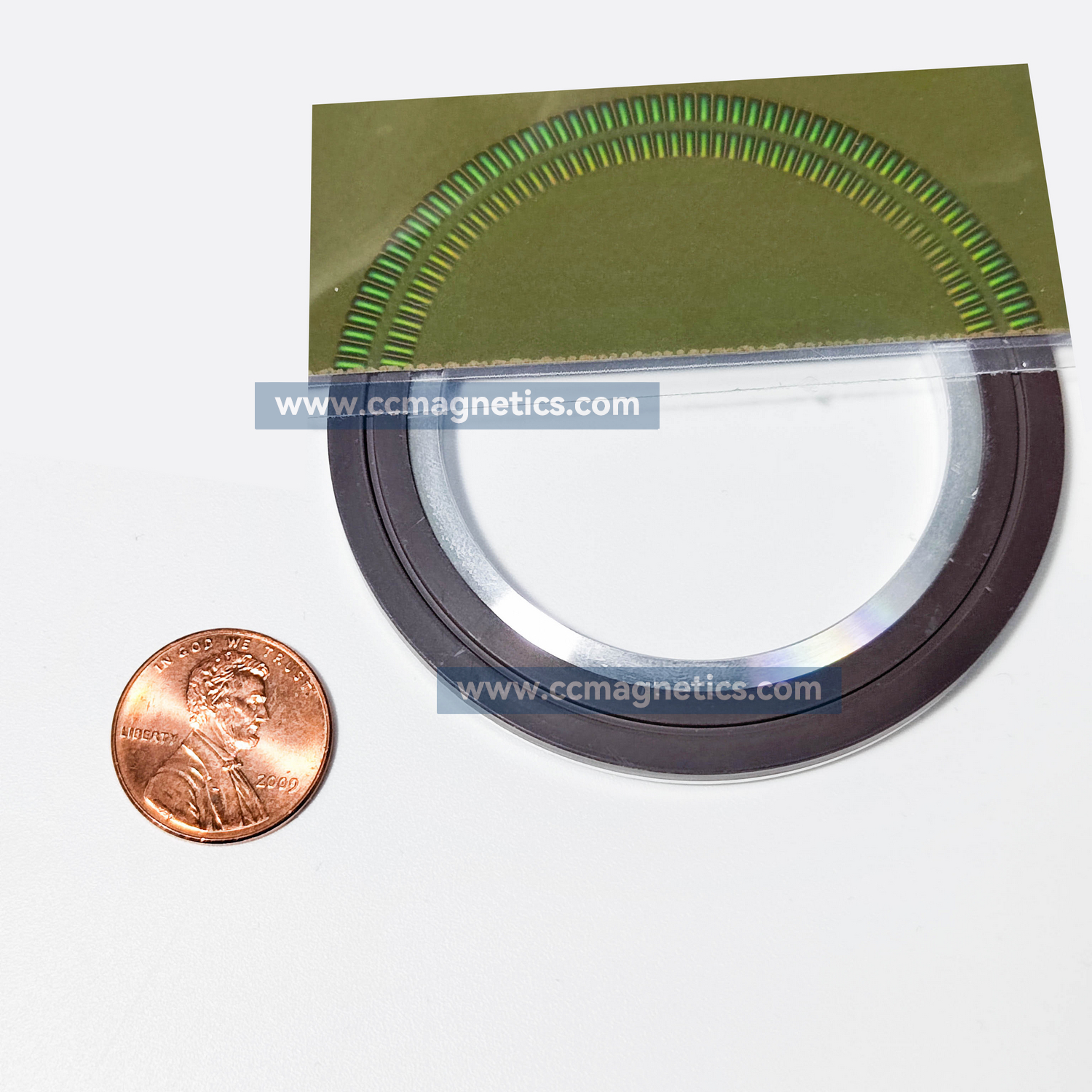
These categories allow for customization based on the specific needs of the application, ensuring optimal performance from the encoder magnetic rings.
When choosing materials for a magnetic encoder, several factors come into play, including environmental conditions, application specifics, and cost considerations.
Today, I’m highlighting rubber magnets. You can evaluate whether a magnetic ring is appropriate for your application based on its distinct properties.
In a nutshell: The magnetic poles are pronounced, the magnetic performance is consistent, and the material is thin, lightweight, and durable. It’s also wear-resistant, capable of withstanding high pressure, and offers excellent anti-corrosion properties. If your application doesn’t involve high-temperature environments, rubber magnets are an ideal material choice for your magnetic ring needs!

 Deutsch
Deutsch